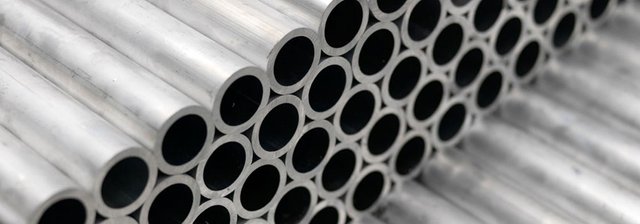Stainless Steel 304 Pipe vs Stainless Steel 316 Pipes
When selecting the appropriate materials for industrial applications, especially in fields like construction, manufacturing, and engineering, the choice of metal is paramount. Among the plethora of options available, stainless steel stands out for its exceptional properties, durability, and resistance to corrosion. Within stainless steel, two grades are particularly popular: 304 and 316. In this blog post, we'll see the differences between Stainless Steel 304 Pipes and Stainless Steel 316 Pipes to help you decide on your specific needs.

Stainless Steel 304 Pipes
Stainless Steel 304 is one of the most common grades of stainless steel and is widely used in various applications due to its versatility and excellent corrosion resistance. Pipes made from SS 304 are known for their durability, ease of fabrication, and affordability. Here are some key characteristics of Stainless Steel 304 Pipes:
-
Corrosion Resistance: Stainless Steel 304 offers good corrosion resistance, but it is more susceptible to corrosion in environments with high chloride exposure or acidic conditions than Stainless Steel 316.
-
Strength and Ductility: SS 304 Pipes possess good strength and flexibility, making them suitable for various applications, including structural and architectural purposes.
-
Weldability: These pipes exhibit excellent weldability, allowing for easy fabrication and joining using common welding techniques.
-
Cost-Effective: Stainless Steel 304 is generally more cost-effective than 316, making it a preferred choice for projects where budget is a significant consideration.
Stainless Steel 316 Pipes
Stainless Steel 316 is an austenitic grade of stainless steel known for its superior corrosion resistance, particularly in aggressive and corrosive environments. Although similar in appearance to SS 304, Stainless Steel 316 offers several distinct advantages, especially in challenging conditions. Here are the key characteristics of Stainless Steel 316 Pipes:
-
Enhanced Corrosion Resistance: SS 316 Pipes provide superior corrosion resistance, especially in marine environments, chemical processing plants, and areas exposed to chloride ions. This makes them ideal for applications where corrosion is a major concern.
-
High-Temperature Performance: Stainless Steel 316 exhibits better resistance to high temperatures than 304, making it suitable for applications involving elevated temperatures and thermal cycling.
-
Medical and Pharmaceutical Applications: Due to its excellent corrosion resistance and biocompatibility, SS 316 is commonly used in medical implants, pharmaceutical equipment, and food processing industries where hygiene and corrosion resistance are critical.
-
Strength and Durability: While Stainless Steel 316 is slightly less ductile than 304, it offers higher tensile strength and toughness, enhancing durability in demanding environments.
Choosing the Right Material
Selecting between Stainless Steel 304 and Stainless Steel 316 Pipes depends on various factors, including the specific application requirements, environmental conditions, budget constraints, and regulatory standards. Here are some guidelines to help you make an informed decision:
- Corrosion Resistance: If your application involves exposure to corrosive environments, particularly those with high chloride content, Stainless Steel 316 is the preferred choice.
- Cost Consideration: For projects with budget constraints where corrosion resistance is not the primary concern, Stainless Steel 304 may offer a more cost-effective solution without significantly compromising performance.
- Temperature and Mechanical Properties: Stainless steel 316 is a suitable option if your application involves high temperatures or requires superior mechanical properties, such as strength and toughness.
In conclusion, Stainless Steel 304 and Stainless Steel 316 Pipes offer distinct advantages and are suitable for various applications. By understanding the differences between these grades and evaluating your specific requirements, you can choose the most appropriate material to ensure optimal performance, longevity, and cost-effectiveness for your project.